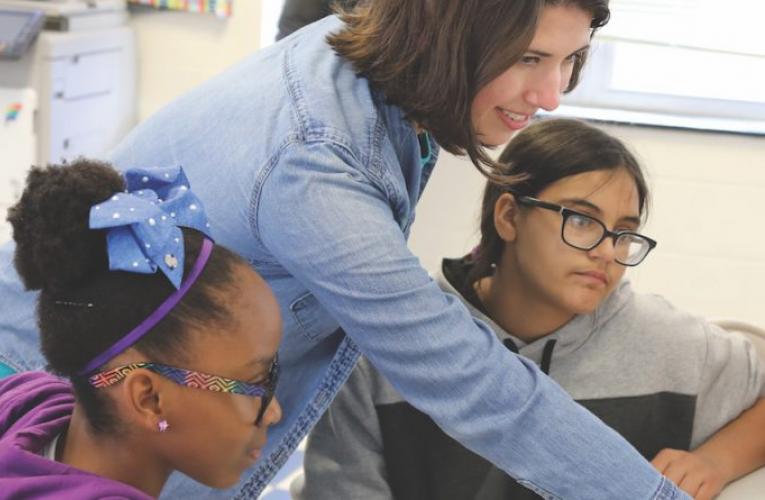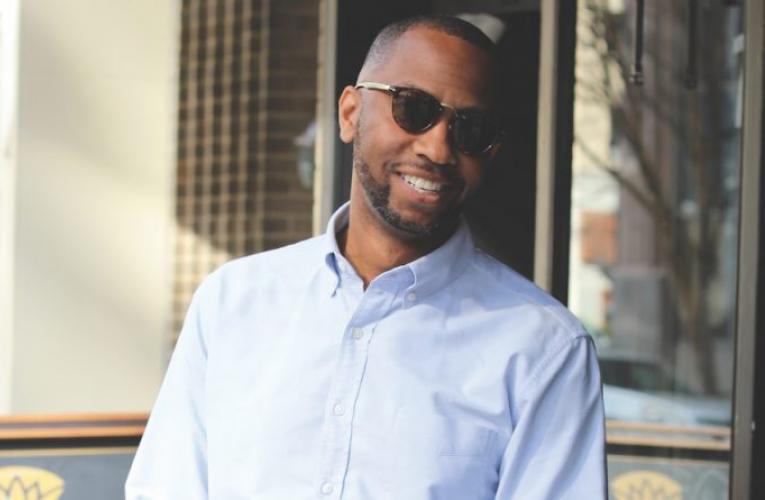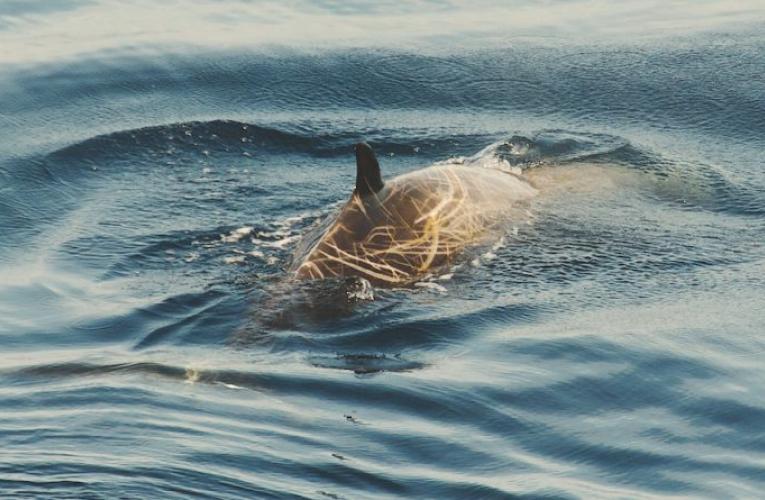Ali Boden and Cass Nieman, Master of Environmental Management students at Duke University’s Nicholas School of the Environment, feel more part of the Carteret County community after getting involved in education outreach through the Duke University Marine Lab (DUML) Community Science Initiative.
This past summer, the second-year Coastal Environmental Management (CEM) students developed and implemented a science, technology, engineering and mathematics (STEM) curriculum for elementary school students as well as activities for local summer camps. Boden and Nieman have continued similar efforts by engaging in Boys & Girls Club afterschool programs since the start of the school year, and even after Hurricane Florence hit the area.
In this Q&A, Boden and Nieman discuss what drew them to working with the community, why their work has been one of the most rewarding experiences they’ve had at Duke and why current and future Nicholas School students should consider doing the same.
How did you get involved with Duke Marine Lab’s Community Science Initiative?
Boden: While spending the summer before my first year as an MEM student at Duke Marine Lab, I took advantage of speaking with faculty about my career interests. Through one of those conversations, I had been recommended to speak with Liz Demattia, who created the DUML Community Science Initiative. Over the course of my first year, I kept in contact with Liz, and at some point in the spring semester she offered me a chance to work with her starting in the summer.
Nieman: At the end of my first year as a CEM, I reached out to a second-year at the Duke Marine Lab to see if she knew of any summer opportunities to get involved with community outreach, particularly regarding plastic pollution. She was part of the DUML Community Science Initiative during the school year and suggested I talk to Liz Demattia because she is a great resource who is responsible for a lot of community engagement, particularly in the context of coastal issues. I reached out to Liz and she told me she would love for me to come onboard for the summer, and this quickly transpired into the school year as well.
What drew you to working in STEM education and outreach?
Boden: Having come from a corporate background involving training new employees before coming to the Nic School, I knew I had a passion for helping others. I chose to return to grad school when I realized I wanted to aim that passion toward engaging the general public with the marine environment. As I have learned from being a part of the community science initiative, STEM education and outreach fits that mold in more ways than I expected. Knowing I have taught K-12 students something new, or have made them excited about science and math, and hopefully inspired them to pursue a career in it, is what drives me to continue working in STEM education and outreach.
Nieman: Prior to coming to Duke, I coached high school soccer and tutored Spanish. Being involved with younger generations who share the same passions as me was very rewarding because I taught them what I knew while learning a lot from them in the process. I had experience with outreach in this context, and I wanted to transition into a role where I could translate environmental issues in a way that made sense to the general public. Getting involved with STEM education and outreach was a great way for me to reach the community that is affected most by marine issues while also involving younger people in science and math activities that get them interested in STEM from a young age.
What kind of projects have you worked on?
Boden: This past summer, the Community Science Initiative developed a student scientist program funded by the Walters Family Foundation, in which we brought in local high school students to engage in research at Duke Marine Lab, as well as engage with younger students in STEM outreach activities. Through this, Cass and I have helped develop these student scientists as leaders, which has been inspiring to witness firsthand.
Another big project I have worked on is in curriculum development. The Community Science Initiative has two major projects focused on providing K-12 curriculums in marine debris and water quality throughout Carteret County and North Carolina. I recently developed a lesson plan in which students can learn about the microplastics in our coastal waters through towing a plankton net behind a boat. We hope to implement this activity next year when the Duke Marine Lab research vessel arrives!
Nieman: During the summer, we spent most of our time developing a STEM curriculum filled with activities to get K-12 kids’ minds thinking and hands moving. The activities ranged from making animals out of cardboard and fastener linkages to constructing “squiggle doodles” out of blueberry containers, markers and motors. We brought new projects each time we went to the Boys & Girls Clubs in Morehead City and Beaufort and to the Core Sound Museum. The student scientists were also a big help to us in conducting this outreach and sharing these programs with the younger people in the community.
In addition to the summer outreach, I have also developed a lesson plan for a water fouling experiment that will be part of our water quality curriculum. It entails testing for differences in abundance and diversity of organisms colonizing and inhabiting artificial versus natural substrates. This part of the curriculum will hopefully be implemented this year as an experiment for the student scientists to carry out from start to finish.
What does it mean to you to work directly with the community and mentor local children?
Boden: Engaging in the STEM education and outreach in this manner has really helped me feel more connected with our local community. Though I’ve only been living in Beaufort since May, I feel more like a resident than just a student because of the connections I’ve made with the kids of this community. Additionally, when engaging the local children, I strive to serve as a motivator to pursue amazing careers. It’s been proven through working with these kids that showing them where they can go in life has made them feel more empowered to be able to make a change in the world. Helping this next generation of leaders, and even the greater local community, feel motivated to make a change is one of the most rewarding things about this job.
Nieman: I think working directly with the community in this way is something very valuable because it connects the divide between Carteret County and the Marine Lab. One might think local residents may feel distant from this institution, but the Community Science Initiative works hard so that both can be intertwined and involved in each other’s work. As for mentoring local children, I think this is one of the best ways to reach the community as a whole. Children are some of the most impressionable people, and when we teach them something that really resonates with them, they go home and tell their friends and family. One thing we aim to do is guide generational change from the bottom-up. I helped interview fourth-graders after they completed our first year-long marine debris program, and they indicated that learning about the effect trash has on the environment has helped change their own behaviors and allowed them to urge their parents to do the same.
Why should current and future students consider getting involved in STEM outreach?
Boden: If you think about the times you met a college or graduate school aged person as a child, I’m sure most of us would agree that we looked up to the “big kids.” When they showed us eye-opening science experiments, or even just taught us a great fun fact, it made our learning experience 10 times more fun. Participating in STEM outreach with K-12 students allows you to be that role model for so many excited-to-learn kids. It’s a great feeling to help provide education to the next generation of leaders, entrepreneurs, engineers and scientists!
Nieman: The community and local kids love meeting “big college kids” who do fun activities with them! We are role models to them, and they are thrilled to have people come show them something new. By the final day of Boys & Girls Club summer camp, kids were begging us not to leave. Getting involved with STEM outreach can be as simple as having students come shadow your research, and that’s awesome because it allows them to consider possible career paths that they might not have otherwise thought about! All in all, it’s very rewarding to both parties involved.



